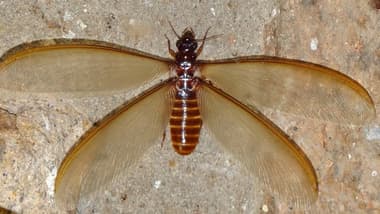TL;DR: Omena (Silver Cyprinid) contains 61-70g crude protein per 100g when sun-dried (approximately 40-45g digestible protein including bones and scales). However, cooking method dramatically affects protein retention: stewed omena provides only 19-24g per 100g due to water-soluble protein losses, while deep-fried retains 44-60g per 100g. Beyond protein, omena offers exceptional calcium (up to 3,669 mg/100g when stewed), omega-3 fatty acids, vitamin B12, iron, and zinc, making it one of Kenya's most affordable and nutrient-dense protein sources.
Omena (silver cyprinid) is a beloved staple across East Africa. It is rich in protein, calcium, and essential fatty acids, making it a cost-effective source of nutrition, especially in communities with limited access to animal-based proteins.
With protein content commonly cited around 37-42g per 100g online, omena appears to outperform even chicken breast in terms of protein density. However, recent research reveals important nuances about preparation methods and their impact on nutritional content.
What the Research Actually Shows
A 2023 study published in Food Security analyzed sun-dried silver cyprinid from Lake Victoria markets and found a median protein content of 61g per 100g of processed whole fish.
More recently, a September 2025 study published in the European Journal of Agriculture and Food Sciences examined omena from warehouses, markets, and schools across Nairobi, Murang'a, Homabay, and Makueni counties, finding even more detailed insights about how processing affects nutritional content.
The researchers found that sun-dried omena protein content ranged from 61.20g to 70.25g per 100g depending on the source, with warehouses averaging 67.53g, confirming the earlier research. However, this measurement includes the entire whole fish: bones, scales, head, and organs.
How Cooking Method Affects Protein Content
The 2025 study revealed a critical finding that many online sources overlook: preparation method dramatically impacts protein retention.
Sun-Dried Omena (Traditional)
Sun-dried omena retains the highest protein concentration:
- Protein content: 61.20-70.25g crude protein per 100g (whole fish)
- Digestible protein estimate: ~40-45g per 100g
- Moisture content: 8.61-15.05%
- Source variation: Warehouses averaged highest (67.53g), followed by schools (65.10g) and markets (65.64g)
Deep-Fried Omena
Deep-fried omena maintains surprisingly good protein levels while increasing fat content from oil absorption:
- Protein content: 44.07-60.73g per 100g
- Mean protein: 52.40g per 100g
- Fat content: 19.47-20.30g per 100g (increased from oil)
- Moisture content: 7.83-12.07%
The higher fat makes deep-fried omena more calorie-dense, which can be advantageous for energy needs but may not be ideal for those monitoring fat intake.
Stewed Omena
Stewed omena shows dramatically lower protein content than many expect:
- Protein content: 19.30-23.75g per 100g
- Mean protein: 21.25g per 100g
- Moisture content: 52.02-60.55%
- Fat content: 5.43-14.29g per 100g
The substantial protein reduction occurs because:
- Water-soluble proteins leach into cooking liquid (often discarded)
- Lipid-protein complexes form during heating, reducing extractability
- High moisture content (52-60%) dilutes protein concentration on a wet-weight basis
Despite lower protein levels, stewed omena retains other essential nutrients and remains practical for school feeding programs due to cost and convenience.
Crude Protein vs. Digestible Protein
Many bloggers have used the 61-70g figure to estimate ~40-45g of digestible protein, but it's important to understand what these numbers mean. The crude protein figure represents "crude protein"; essentially, all nitrogen-containing compounds in the fish. However, not all of this translates to protein your body can actually use:
- Bone collagen and minerals contribute to the nitrogen count but offer limited digestible amino acids
- Scale proteins are largely indigestible by humans
- Connective tissues may have incomplete amino acid profiles
The 40-45g digestible protein estimate for dried omena accounts for these factors. When cooked, the numbers change significantly based on preparation method, as shown above.
Updated Comparison Per 100g
| Protein Source | Protein Content (g) |
| Sun-dried Omena | ~40-45g digestible (from 61-70g crude) |
| Deep-fried Omena | 44-60g protein |
| Stewed Omena | 19-24g protein |
| Chicken Breast (cooked) | 31g |
| Beef (cooked) | 26g |
| Eggs (boiled) | 13g per 100g (~6g per medium egg) |
When you see that chicken breast contains 31g protein per 100g, that measurement usually reflects:
- Only the edible muscle meat (no bones included)
- Highly digestible protein with complete amino acid profiles
- Standardized USDA methodology that accounts for actual consumable portions
The comparison becomes more nuanced when you consider that:
- Stewed omena (19-24g) has less protein than chicken breast
- Deep-fried omena (44-60g) has significantly more protein than chicken breast
- Sun-dried omena provides the highest protein concentration overall
Beyond Protein: Omena's Micro Nutrients
Despite the measurement nuances, omena remains exceptionally nutritious across multiple dimensions:
Calcium Content (mg/100g)
The 2025 study revealed remarkable calcium levels:
- Sun-dried: 1,412-1,884 mg/100g
- Stewed: 3,621-3,669 mg/100g (highest!)
- Deep-fried: 2,972-3,646 mg/100g
Interestingly, stewed omena shows the highest calcium content, likely because acids from tomatoes in the stew help extract calcium from the edible bones.
Iron Content (mg/100g)
- Sun-dried: 3.31-5.89 mg/100g (warehouses highest at 4.47 mean)
- Stewed: 2.10-2.77 mg/100g
- Deep-fried: 3.75-6.48 mg/100g (Market 2 highest at 6.48)
Zinc Content (mg/100g)
- Sun-dried: 5.24-6.07 mg/100g
- Stewed: 3.63-4.29 mg/100g
- Deep-fried: 4.19-6.40 mg/100g
Other Key Nutrients
- Complete protein source with all essential amino acids
- Vitamin B12 powerhouse – one 30g serving provides 470% of daily needs
- Omega-3 fatty acids (DHA and EPA) at 250% of adequate intake per serving
- B-vitamins: Folate (10.93-17.26 µg/100g dried), thiamine, riboflavin, niacin
- Magnesium and potassium for cardiovascular health
Like omena, other traditional protein sources such as kumbekumbe (winged termites) offer exceptional nutrient density, providing both high protein and essential minerals.
Sustainability and Quality Concerns
Current research suggests Lake Victoria could sustainably yield 2 million tonnes of silver cyprinid annually; four times the current catch. This potential could provide significant protein and micronutrients to an estimated 33 million people in the Lake Victoria basin.
However, the 2025 study confirmed quality control issues with market-available omena:
- Significant nutritional variation across supply chain (warehouses, markets, schools)
- Elevated bacterial counts in some samples exceeding East African standards
- Post-harvest losses of 40-60% due to spoilage
- Variable moisture content (8.61-15.05% in sun-dried) affecting preservation quality
- Need for standardization in processing and quality control
These factors suggest that while omena's nutritional potential is enormous, improved processing and handling could maximize both safety and nutritional value.
Recommendations
Based on the 2025 study, our recommendations for Omena intake to obtain its full nutritional benefits are as follows:
For Maximum Protein
If your primary goal is protein intake:
- Sun-dried omena provides the highest protein concentration (~40-45g digestible per 100g)
- Deep-fried omena retains excellent protein (44-60g per 100g) but adds fat calories
- Stewed omena has lower protein (19-24g per 100g) but remains affordable and practical
For Maximum Calcium
If bone health is a priority:
- Stewed omena provides exceptional calcium (3,621-3,669 mg/100g)
- Consume the entire fish including bones for maximum benefit
- The acid in tomato-based stews helps extract calcium from bones
For School Feeding Programs
Despite lower protein retention, stewed omena remains practical because:
- More affordable and easier to prepare for large groups
- Still provides essential nutrients including exceptional calcium
- Easier for children to chew and digest
- Can be combined with other foods for balanced meals
The Bottom Line
Omena's commonly cited "40g protein per 100g" requires important context. The actual protein content varies dramatically based on preparation method:
- Sun-dried: ~40-45g digestible protein (from 61-70g crude) – highest concentration
- Deep-fried: 44-60g protein – good retention, increased fat
- Stewed: 19-24g protein – lowest retention, but highest calcium
The original 61-70g crude protein figure measures whole fish including bones and scales, unlike chicken breast which measures only edible muscle meat. This methodological difference affects direct comparisons.
For practical purposes, sun-dried omena delivers roughly 1.3-1.5 times the digestible protein of chicken breast per gram, while also providing crucial micronutrients often lacking in East African diets. Deep-fried omena performs similarly or better, while stewed omena provides less protein than chicken but excels in calcium content and remains the most practical option for large-scale feeding programs.
The key is understanding that preparation method significantly affects nutritional outcomes, and choosing the right preparation for your specific nutritional goals and practical constraints.
Editor's Note: Nutritional values are based on recent research from multiple Kenyan counties and represent general trends. Individual samples may vary based on fish size, age, feed quality, and specific processing methods. All protein measurements are on a wet-weight basis unless otherwise specified. The study measured nutrients on a dry matter basis for some analyses, which has been converted for practical comparison.
For accurate nutritional planning, consider both the protein content and the broader nutrient profile, including omena's exceptional calcium, omega-3 fatty acids, and micronutrient density.
Reviewed by Grace Mutua, nutritionist.





Join the conversation!
Share your thoughts on "What is Omena's Actual Protein Content?" below.